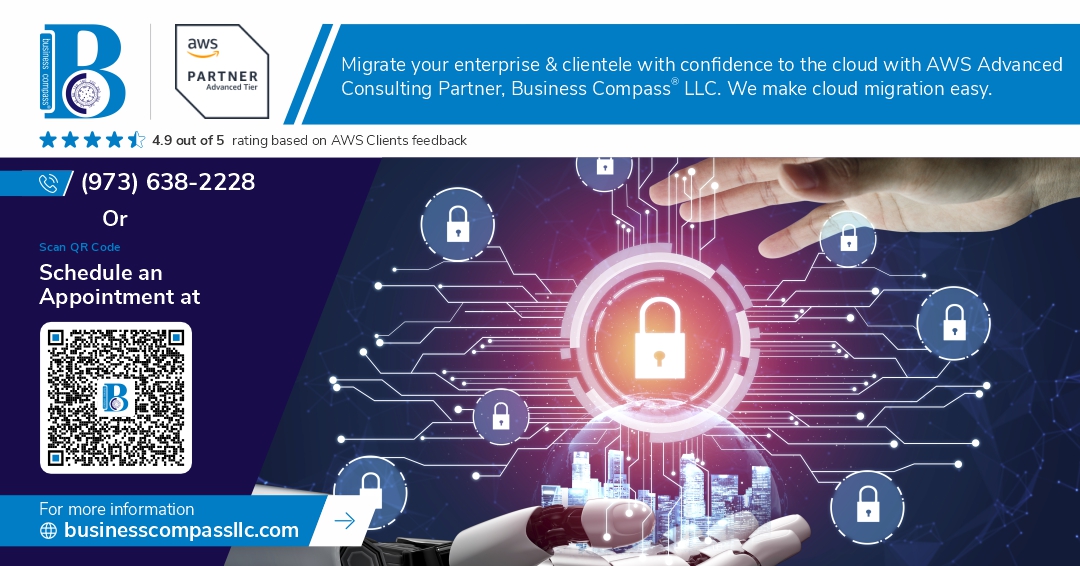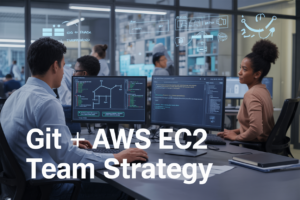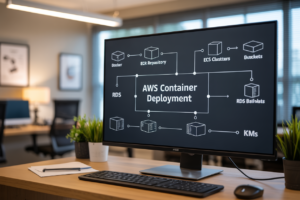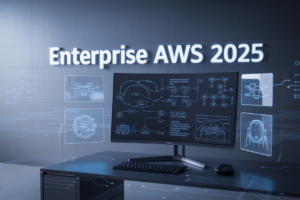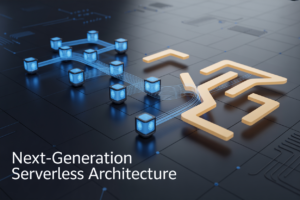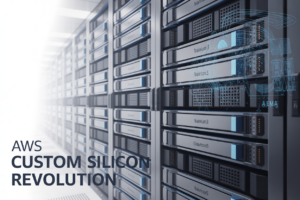Are you losing sleep over the security of your AWS compute resources? 🛡️ In today’s digital landscape, where cyber threats loom large, ensuring the safety of your EC2 instances, Lambda functions, and container services is paramount. But with the ever-evolving nature of cloud computing, keeping up with best practices can feel like chasing a moving target.
Fear not! We’re here to guide you through the maze of AWS security best practices for compute services. Whether you’re running workloads on EC2, leveraging serverless with Lambda, or orchestrating containers with Fargate, ECS, or EKS, this comprehensive guide will equip you with the knowledge to fortify your defenses. From IAM best practices to network security, data protection, and compliance, we’ll cover all the bases to help you build a robust security posture.
Ready to take your AWS compute security to the next level? Let’s dive into the world of IAM best practices, EC2 instance hardening, Lambda function security, and container safeguarding. We’ll also explore essential topics like network security, data protection, monitoring, and compliance to ensure your AWS environment is locked down tight. 🔒 Buckle up as we embark on this crucial journey to secure your AWS compute resources!
Understanding AWS Compute Services
Overview of EC2, Lambda, Fargate, ECS, and EKS
AWS offers a diverse range of compute services to meet various application needs. Let’s explore the key characteristics of each service:
| Service | Type | Use Case | Key Features |
|---|---|---|---|
| EC2 | Virtual Servers | Traditional applications, full control over infrastructure | Scalable, various instance types |
| Lambda | Serverless Computing | Event-driven, short-running tasks | Pay-per-use, automatic scaling |
| Fargate | Serverless Containers | Containerized applications without managing infrastructure | Easy deployment, cost-effective |
| ECS | Container Orchestration | Microservices, Docker containers | Scalable, integrates with other AWS services |
| EKS | Managed Kubernetes | Complex containerized applications, hybrid deployments | Kubernetes-native, highly available |
Importance of securing compute resources
Securing compute resources is crucial for several reasons:
- Data Protection: Prevents unauthorized access to sensitive information
- Compliance: Ensures adherence to industry regulations and standards
- Business Continuity: Minimizes downtime and service disruptions
- Cost Savings: Avoids potential financial losses due to security breaches
- Reputation Management: Maintains customer trust and company image
Common security challenges in AWS compute
When working with AWS compute services, organizations often face these security challenges:
- Misconfigurations: Improperly set up services can lead to vulnerabilities
- Access Control: Managing user permissions and authentication across services
- Network Security: Protecting against external threats and lateral movement
- Data Encryption: Ensuring data is encrypted at rest and in transit
- Container Security: Addressing unique security concerns in containerized environments
- Compliance: Meeting regulatory requirements across different compute services
- Monitoring and Logging: Maintaining visibility into security events and anomalies
Now that we have a solid understanding of AWS compute services and their security implications, let’s explore how to implement IAM best practices to enhance your overall security posture.
Implementing IAM Best Practices
Creating and managing IAM roles for compute services
When it comes to securing AWS compute services, creating and managing IAM roles is crucial. IAM roles provide temporary credentials, eliminating the need for long-term access keys and enhancing security.
For EC2 instances, use instance profiles to attach IAM roles. This allows applications running on EC2 to securely access other AWS services without embedding credentials.
For Lambda functions, create execution roles that grant only the necessary permissions. These roles should be specific to each function’s requirements.
For container services like ECS and EKS, use task execution roles and pod execution roles respectively. These roles define the permissions for your containers to interact with other AWS services.
| Service | IAM Role Type |
|---|---|
| EC2 | Instance Profile |
| Lambda | Execution Role |
| ECS | Task Execution Role |
| EKS | Pod Execution Role |
Applying least privilege principle
The least privilege principle is a fundamental aspect of IAM best practices. It involves granting only the minimum permissions necessary for a user, role, or service to perform its intended tasks.
To implement this:
- Start with minimal permissions
- Use AWS managed policies as a baseline
- Create custom policies for specific use cases
- Regularly review and refine permissions
Regularly auditing and rotating access keys
Regular auditing and rotation of access keys is essential for maintaining a secure environment. This practice helps prevent unauthorized access and reduces the impact of potential key compromises.
Key steps include:
- Using AWS IAM Access Analyzer to identify unused access keys
- Implementing a key rotation schedule (e.g., every 90 days)
- Monitoring key usage with AWS CloudTrail
Leveraging IAM condition keys for enhanced security
IAM condition keys add an extra layer of security by allowing you to specify conditions under which IAM policies are in effect. These conditions can be based on various factors such as time, IP address, or the presence of MFA.
Example use cases:
- Restrict access to specific IP ranges
- Enforce MFA for sensitive operations
- Limit access based on time of day or date
By implementing these IAM best practices, you significantly enhance the security posture of your AWS compute resources. Next, we’ll delve into specific security measures for EC2 instances, building upon these foundational IAM practices.
Securing EC2 Instances
Hardening EC2 instances with security groups
Security groups act as virtual firewalls for EC2 instances, controlling inbound and outbound traffic. To harden your EC2 instances:
- Create specific security groups for different types of instances
- Apply the principle of least privilege
- Use security group references instead of IP ranges where possible
- Regularly review and update security group rules
| Security Group Best Practices | Description |
|---|---|
| Limit inbound traffic | Allow only necessary ports and protocols |
| Use stateful filtering | Automatically allow return traffic |
| Leverage security group IDs | Reference other security groups for better management |
| Implement egress rules | Control outbound traffic to enhance security |
Implementing network access control lists (NACLs)
NACLs provide an additional layer of network security at the subnet level. Unlike security groups, NACLs are stateless and require explicit allow rules for both inbound and outbound traffic.
Key points for implementing NACLs:
- Create custom NACLs for granular control
- Use numbered rules for processing order
- Implement both allow and deny rules
- Regularly audit and update NACL rules
Encrypting EBS volumes and snapshots
Encrypting Elastic Block Store (EBS) volumes and snapshots is crucial for data protection. AWS offers easy-to-use encryption options:
- Enable encryption by default for new EBS volumes
- Use AWS Key Management Service (KMS) for key management
- Encrypt existing volumes by creating encrypted snapshots
- Implement automated snapshot encryption policies
Enhancing Lambda Function Security
Configuring function permissions and execution roles
When enhancing Lambda function security, configuring proper permissions and execution roles is crucial. Start by applying the principle of least privilege, granting only the necessary permissions for your function to operate. Use AWS Identity and Access Management (IAM) to create specific roles for each Lambda function, tailoring the permissions to its exact needs.
Key steps for configuring permissions:
- Create a custom IAM role for each function
- Attach only required AWS managed policies
- Define function-specific inline policies
- Regularly review and update permissions
| Permission Type | Description | Best Practice |
|---|---|---|
| AWS Managed Policies | Pre-defined policies by AWS | Use sparingly, prefer custom policies |
| Customer Managed Policies | Reusable custom policies | Create for common permissions across functions |
| Inline Policies | Function-specific policies | Use for unique, function-specific permissions |
Implementing VPC integration for network isolation
VPC integration allows Lambda functions to access resources within a private network, enhancing security through isolation. This approach is essential when your function needs to interact with databases, caches, or other services that aren’t publicly accessible.
To implement VPC integration:
- Select the appropriate VPC and subnets
- Configure security groups to control inbound and outbound traffic
- Ensure proper NAT gateway or VPC endpoints for external communications
- Adjust function timeout and memory allocation to account for VPC cold starts
Encrypting environment variables
Protecting sensitive information stored in environment variables is vital for Lambda security. AWS provides built-in encryption for environment variables, but additional steps can further enhance protection:
- Use AWS Key Management Service (KMS) for encryption
- Implement client-side encryption for highly sensitive data
- Rotate encryption keys regularly
- Limit access to decryption permissions
Monitoring and logging Lambda executions
Effective monitoring and logging are crucial for maintaining Lambda function security. Utilize AWS CloudWatch for comprehensive insights into function performance and potential security issues.
Key monitoring practices:
- Set up CloudWatch Alarms for anomaly detection
- Use CloudWatch Logs for detailed execution logs
- Implement X-Ray for tracing and performance analysis
- Regularly review and analyze logs for security patterns
By implementing these security measures, you can significantly enhance the protection of your Lambda functions, ensuring they operate securely within your AWS environment.
Safeguarding Container Services (Fargate, ECS, EKS)
Securing container images and registries
To safeguard container services in AWS, it’s crucial to start with securing container images and registries. Here are some best practices:
- Use Amazon ECR (Elastic Container Registry) for private image storage
- Enable image scanning in ECR to detect vulnerabilities
- Implement least privilege access to registries
- Sign and verify container images
| Practice | Description |
|---|---|
| Private ECR | Ensures images are stored securely and accessible only to authorized users |
| Image scanning | Automatically scans images for known vulnerabilities |
| Least privilege | Restricts access to only necessary users and roles |
| Image signing | Verifies image integrity and authenticity |
Implementing network policies and segmentation
Network segmentation is essential for container security:
- Use security groups to control inbound and outbound traffic
- Implement VPC network policies for granular control
- Utilize AWS PrivateLink for secure communication between services
Managing secrets in container environments
Proper secret management is critical:
- Use AWS Secrets Manager or Systems Manager Parameter Store
- Rotate secrets regularly
- Avoid hardcoding secrets in container images or environment variables
Applying security patches to container hosts
Keeping container hosts updated is crucial:
- Use Amazon ECS-optimized AMIs for ECS
- Leverage EKS-managed node groups for automatic updates
- Implement a regular patching schedule for self-managed hosts
By following these practices, you can significantly enhance the security of your container services in AWS. Next, we’ll explore network security measures for compute resources to further strengthen your AWS infrastructure.
Network Security for Compute Resources
Designing secure VPC architectures
When it comes to network security for AWS compute resources, designing a secure Virtual Private Cloud (VPC) architecture is crucial. A well-designed VPC provides isolation, access control, and network segmentation for your compute resources.
Key components of a secure VPC architecture include:
- Subnets: Public and private
- Network Access Control Lists (NACLs)
- Security Groups
- Internet Gateway and NAT Gateway
Here’s a table summarizing the best practices for each component:
| Component | Best Practice |
|---|---|
| Subnets | Use private subnets for sensitive resources and public subnets for internet-facing resources |
| NACLs | Implement stateless firewall rules at the subnet level |
| Security Groups | Apply granular, stateful firewall rules at the instance level |
| Internet Gateway | Restrict outbound traffic and use NAT Gateway for private subnet internet access |
Implementing VPN and Direct Connect for secure access
To ensure secure access to your AWS compute resources, implement Virtual Private Network (VPN) or AWS Direct Connect solutions. These services provide encrypted connections between your on-premises network and AWS VPC.
- VPN: Ideal for smaller-scale, cost-effective secure connections
- Direct Connect: Offers dedicated, high-bandwidth connections for larger-scale operations
Utilizing AWS PrivateLink for private network communication
AWS PrivateLink enables private connectivity between VPCs, AWS services, and on-premises applications without exposing traffic to the public internet. This service enhances security by:
- Reducing the attack surface
- Simplifying network architecture
- Improving data privacy
Configuring AWS WAF for web application protection
AWS Web Application Firewall (WAF) provides an additional layer of security for your web applications running on EC2, Lambda, or container services. Key features include:
- Protection against common web exploits
- Customizable security rules
- Integration with AWS CloudFront and Application Load Balancer
By implementing these network security measures, you can significantly enhance the protection of your AWS compute resources against potential threats and unauthorized access.
Data Protection and Encryption
Implementing encryption at rest and in transit
Protecting data is crucial in AWS compute services. Encryption at rest and in transit are two essential layers of defense:
- Encryption at rest:
- Use Amazon EBS encrypted volumes
- Enable S3 server-side encryption
- Utilize AWS KMS for key management
- Encryption in transit:
- Implement SSL/TLS for all network communications
- Use VPN or AWS Direct Connect for secure connections
| Service | At Rest Encryption | In Transit Encryption |
|---|---|---|
| EC2 | EBS encryption | SSL/TLS |
| Lambda | Environment variables | API Gateway with HTTPS |
| ECS/EKS | EBS/EFS encryption | TLS between containers |
Managing encryption keys with AWS KMS
AWS Key Management Service (KMS) provides centralized control over cryptographic keys:
- Create and manage customer master keys (CMKs)
- Integrate KMS with other AWS services
- Implement key rotation policies
- Use key policies and IAM for access control
Securing data in S3 buckets used by compute services
Protect S3 buckets that store data for compute services:
- Enable default encryption
- Use bucket policies to restrict access
- Implement versioning for data recovery
- Enable access logging for auditing
Implementing backup and disaster recovery strategies
Ensure data resilience with robust backup and DR plans:
- Use AWS Backup for automated, policy-driven backups
- Implement cross-region replication for critical data
- Create snapshots of EBS volumes and RDS instances
- Design multi-AZ and multi-region architectures for high availability
With these data protection and encryption measures in place, you can significantly enhance the security posture of your AWS compute resources. Next, we’ll explore how to effectively monitor your environment and respond to security incidents.
Monitoring and Incident Response
Leveraging AWS CloudTrail for audit logging
AWS CloudTrail is a crucial service for maintaining a comprehensive audit log of all actions taken within your AWS environment. It provides detailed information about API calls, user activities, and resource changes, enabling you to:
- Track user activity and API usage
- Detect unauthorized access attempts
- Investigate security incidents
- Demonstrate compliance with regulatory requirements
To effectively leverage CloudTrail:
- Enable CloudTrail in all regions
- Configure multi-region trails
- Integrate with CloudWatch Logs for real-time monitoring
- Use server-side encryption for log files
| CloudTrail Feature | Security Benefit |
|---|---|
| Log file integrity validation | Ensures log files haven’t been tampered with |
| Integration with S3 | Provides long-term, secure storage of log files |
| Event selectors | Allows fine-grained control over logged events |
| Organization trail | Centralizes logging for multi-account environments |
Configuring CloudWatch alarms for security events
CloudWatch alarms are essential for proactive security monitoring. By setting up alarms for specific security events, you can receive immediate notifications when potential threats occur. Key steps include:
- Identify critical security metrics
- Set appropriate thresholds
- Configure notification actions (e.g., SNS topics)
- Regularly review and refine alarm configurations
Implementing automated incident response with AWS Lambda
Automated incident response using Lambda functions can significantly reduce response times and mitigate potential damage. Here’s how to implement it:
- Create Lambda functions for specific response actions
- Set up CloudWatch Events to trigger Lambda functions
- Define escalation procedures for manual intervention
- Regularly test and update response workflows
Utilizing AWS Config for compliance monitoring
AWS Config helps maintain continuous compliance by:
- Assessing resource configurations against predefined rules
- Providing detailed configuration history
- Enabling automated remediation actions
To maximize AWS Config’s effectiveness:
- Enable Config in all regions
- Customize Config rules to match your security requirements
- Integrate with CloudWatch Events for real-time notifications
- Utilize conformance packs for industry-specific compliance
Now that we’ve covered monitoring and incident response, let’s explore how to ensure compliance and governance in AWS compute environments.
Compliance and Governance
Aligning with industry standards and regulations
When securing AWS compute services, it’s crucial to align with industry standards and regulations. Many organizations must comply with frameworks such as HIPAA, PCI DSS, GDPR, and ISO 27001. AWS provides several tools and services to help achieve and maintain compliance:
- AWS Artifact: Offers on-demand access to AWS security and compliance reports
- AWS Compliance Programs: Provides information on AWS compliance certifications
- Shared Responsibility Model: Clarifies security responsibilities between AWS and customers
| Regulation | AWS Compliance Tools |
|---|---|
| HIPAA | AWS HIPAA Compliance Program, HIPAA-eligible services |
| PCI DSS | AWS PCI DSS Compliance Package, PCI DSS Quick Start |
| GDPR | GDPR-specific features, Data Processing Addendum |
| ISO 27001 | ISO-certified infrastructure and services |
Implementing AWS Config Rules for continuous compliance
AWS Config is a powerful service for assessing, auditing, and evaluating the configurations of your AWS resources. To ensure continuous compliance:
- Enable AWS Config in your account
- Set up Config Rules aligned with your compliance requirements
- Use managed rules or create custom rules
- Configure remediation actions for non-compliant resources
- Integrate with AWS Systems Manager for automated remediation
Leveraging AWS Security Hub for centralized security management
AWS Security Hub provides a comprehensive view of your security and compliance status across AWS accounts. To maximize its benefits:
- Enable Security Hub in your AWS accounts
- Configure security standards (e.g., CIS AWS Foundations Benchmark)
- Integrate with other AWS services like GuardDuty and Inspector
- Set up custom actions for automated response to security findings
- Use the Security Hub dashboard for a centralized view of your security posture
Conducting regular security assessments and penetration testing
Regular security assessments and penetration testing are essential for maintaining a robust security posture. AWS supports these activities through:
- Amazon Inspector: Automated vulnerability assessments for EC2 instances
- AWS Penetration Testing policy: Guidelines for conducting penetration tests on AWS resources
- AWS Marketplace: Third-party security assessment tools and services
- AWS Partner Network: Certified security partners for comprehensive assessments
By implementing these compliance and governance measures, you can ensure that your AWS compute resources adhere to industry standards and maintain a strong security posture. Regular assessments and continuous monitoring will help identify and address potential vulnerabilities proactively.
Securing AWS compute services is a critical aspect of maintaining a robust and resilient cloud infrastructure. By implementing IAM best practices, securing EC2 instances, enhancing Lambda function security, and safeguarding container services, organizations can significantly reduce their attack surface. Network security, data protection, and encryption further fortify these compute resources against potential threats. Regular monitoring, incident response planning, and adherence to compliance standards ensure that your AWS environment remains secure and resilient in the face of evolving cyber threats.
As you embark on your journey to secure your AWS compute resources, remember that security is an ongoing process. Stay informed about the latest AWS security features and best practices, regularly review and update your security posture, and foster a culture of security awareness within your organization. By doing so, you’ll be well-equipped to harness the full potential of AWS compute services while maintaining the highest standards of security and compliance.










